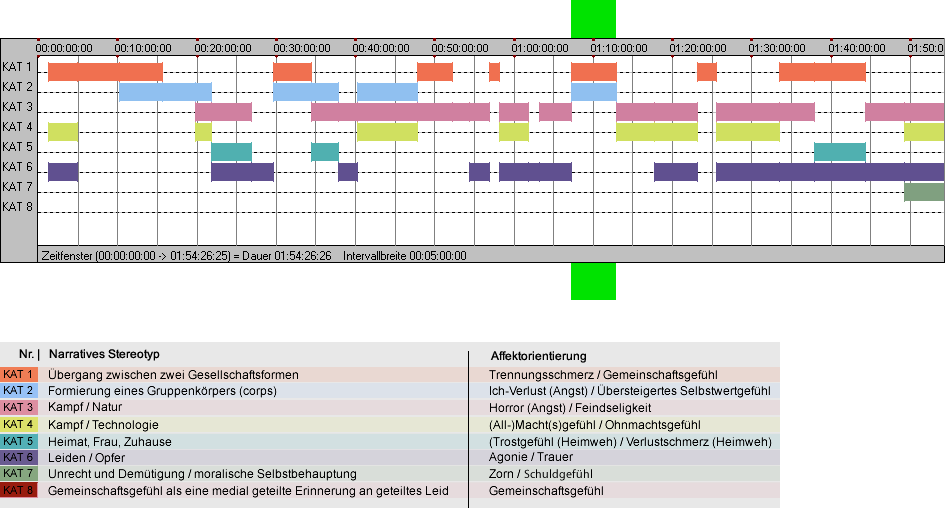Exhaustion and the cared-for father*
Classification in categories
- Transition between two social systems
- Formation of a group body (corps)
Please enable JavaScript in Your browser.


Metadata
Movie: Bataan*
Number: 19
Individual analysis: Bataan*
Timecode start: 01:07:12:13
Timecode end: 01:12:59:12
Year of origin: 1943
In the film’s dramaturgical structure this scene is between Ramirez’ death from malaria and the failed start of the American plane. At its center is the decision to hold position despite the almost hopeless situation. Shot composition is the dominant level of the staging, in interplay with sound design and editing. The tension connected to this decision is staged as an opposition of two image spaces. This opposition determines the dynamic pattern. Number: 19
Individual analysis: Bataan*
Timecode start: 01:07:12:13
Timecode end: 01:12:59:12
Year of origin: 1943
The first image space is dominated by the fixed frame and the figures of Dane and Lieutenant Bently. The figures within one frame are standing respectively in the intersection of the lines of sight, their relation to one another (gestures and gazes) form the dynamic center of each shot and their voices are at the acoustic foreground. These images are contrasted with visual spaces connected to other figures. The frames of the respective shots are crossed over either by gazes beyond the edge of the frame or by movements of the figures into or out of the frame. However these visual events are given almost no acoustic weight. Rather in all of these shots, the voices of the Lieutenant and especially Dane remain in the acoustic foreground. ML
In this way in the course of the editing a general (acoustic and shot composition) dominance is established within the shots – a staging of decision-making power (>EMU 1). This dominance is first bound to the equally “even” image space around the figures of Dane and the Lieutenant, Dane's movement, followed by the camera, introduces the dissolution of this dominance (>EMU 2). After a short interruption (confrontation with Todd), the slight movement of the camera that follows and the onset of music make the dissolution of the stability created at the scene's beginning through shot composition and sound design that much clearer.
The scene’s affective arc has its zenith in EMU 2: after the fixed camera and frame are dissolved by the movement of both camera and characters the tension reaches its highpoint in the renewed interruption of this movement. This pause is followed by a camera movement and a movement of sinking together staged in an acoustic transition.
Expressive movement units
01 02Materials about the scene
Position of the scene in the film





